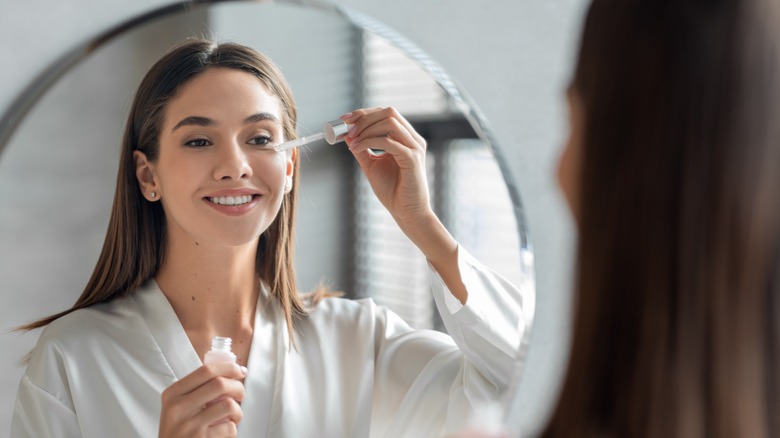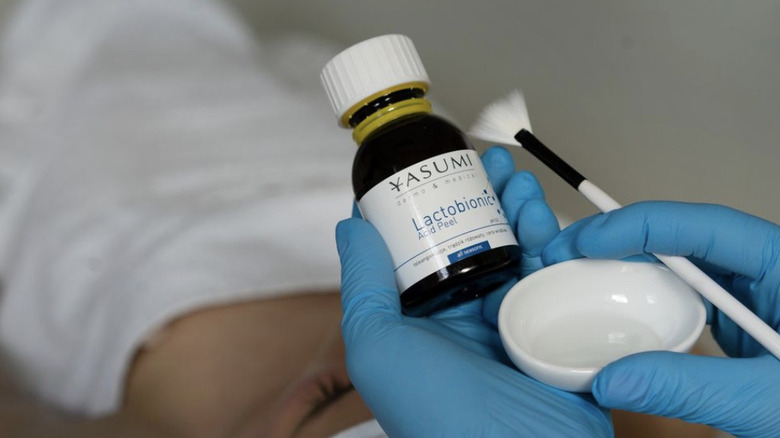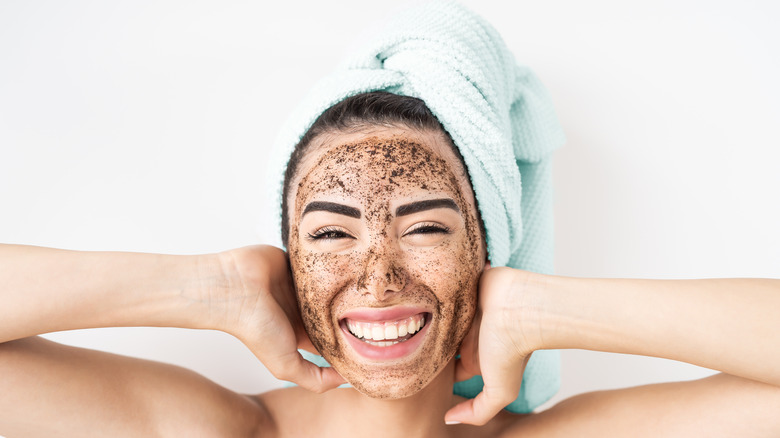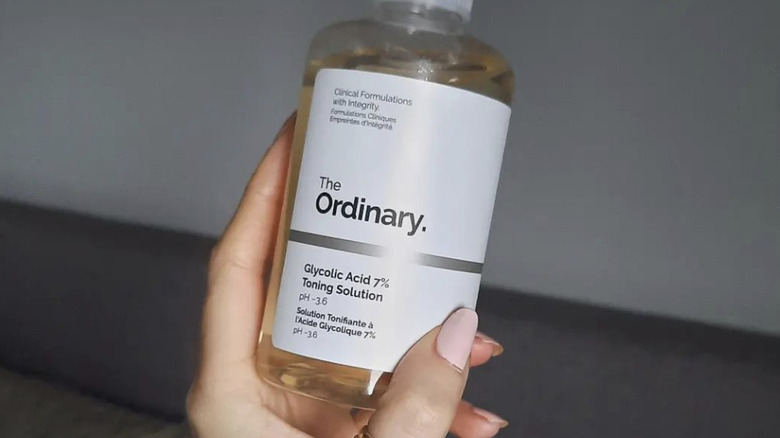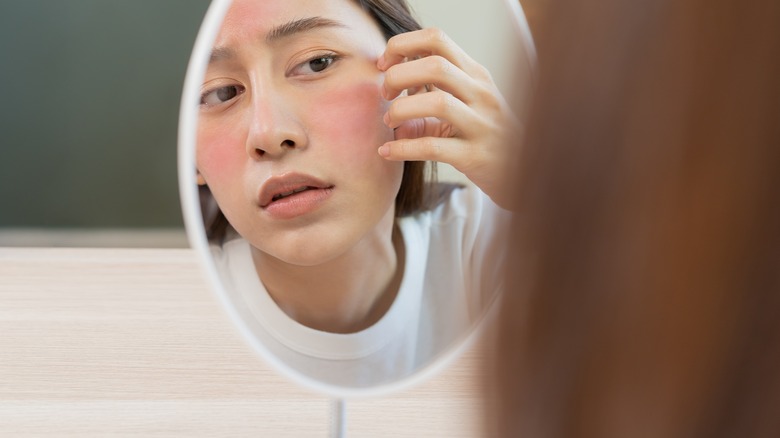Lactobionic Acid: What It Is And Which Skin Types Should Use It?
Skin experts have discovered another new skincare ingredient that helps exfoliate the skin. Lactobionic acid is a polyhydroxy acid (PHA) exfoliator that is gentle on skin types prone to irritation and sensitivity. PHAs are subsequent to alpha-hydroxy acids (AHAs), so they're not as strong but still effective. We thought malic acid had taken the trophy for the best gentle exfoliator. Yet, lactobionic acid acts as a humectant (a moisturizing agent) while removing dead skin cells and unclogging pores. A few other AHAs you might be familiar with are mandelic, lactic, glycolic, citric, etc., that work to target the same problems on your face.
Applying acids to your skin sounds scary, but they carry various benefits to help improve skin tone and appearance. Some AHAs can be harsher on certain skin types, and finding an acid that works with your skin can be challenging. It's a lot of trial and error when using a new ingredient. So, when skin experts find an ingredient they know will work for most skin types, they'll release everything there is to know about it. In addition, skincare brands are always ready to create products with new ingredients. Here is everything you need to know about lactobionic acid.
What is lactobionic acid?
Most acids are derived from fruits or sugar, but lactobionic acid comes from the oxidation of lactose. Not to get lactobionic acid confused with lactic acid, even though they both derive from milk, lactobionic acid is a PHA), while lactic acid is an AHA. The former are larger molecules that don't penetrate the skin like other acids. Instead, it just affects the surface layer of the skin. Lactobionic acid is still an excellent multitasker, as it helps remove dead skin cells, reduces scars and hyperpigmentation, and moisturizes the skin.
Even though lactobionic acid is a PHA, it has similar qualities to AHAs, like glycolic acid, which helps clear the skin without drying it out or irritating it too much. It makes it the perfect acid for every skin type: sensitive, dry, oily, and combination. But what if you have sensitive or dry skin? In that case, you'll want to use a lower percentage of lactobionic acid to prevent irritation from high concentrations mixed with other skincare ingredients. On the other hand, if you're trying to repair your skin barrier but find that mandelic or citric acid irritates your skin, lactobionic can help attract water to the skin while removing debris and impurities.
Benefits of lactobionic acid
Even though lactobionic acid has similar benefits to other acids, it has a couple of different ones that could help improve your skin tremendously. While it doesn't penetrate the skin like other acids, it works just as hard to improve its texture and impurities. Due to its low concentration, lactobionic acid is perfect for sensitive skin, so it can be used up to three times a week without irritating the skin while protecting it from sun damage.
Like other AHAs, lactobionic acid helps with cell turnover, so it can fade dark spots, reduce hyperpigmentation, and brighten the skin. In addition to removing dead skin cells, the acid leaves the skin hydrated for hours with its moisturizing agent. Since it's considered an antioxidant, it can improve the tone and elasticity of some skin types. In addition, the antioxidant properties protect the skin from other environmental aggressors, like pollution.
How to use it in your skincare routine
There are different ways to incorporate lactobionic acid in your skincare routine, such as using a toner, face mask, serum, or scrub that include the ingredient. Each product will have a different percentage of lactobionic acid, so if you have sensitive or dry skin, find products with lower numbers. When you apply the acid, you want to ensure it's done after you've washed your face with your cleanser and before any oils or moisturizers so that it works properly. In addition, avoid mixing lactobionic acid with other acids, like glycolic acid, to prevent skin irritation.
Using a lactobionic toner works better on the skin. Take a cotton pad and add a few drops of the toner and swipe it along the face, or add drops to your clean hands and pat it into the skin to use every ounce of product. Use a moisturizer after application. Since everyone has a different skin type, some products will work better than others, so you can try a face mask, toner, or serum and see which one your skin likes the best. Like other new ingredients, you want to start using the acid two to three times a week to get your skin used to it and see how it reacts; then, you can increase the amount if you feel it's necessary.
Products to avoid using with lactobionic acid
Even though lactobionic acid impacts the surface layer of the skin, you want to follow safety instructions. Do not layer exfoliants on each other even though they're meant to do the same job. They can over-exfoliate the skin and damage its barrier. It can take a long time for your skin to heal from over-exfoliation, so you want to take it slow. You can alternate between exfoliators throughout the week, but simultaneous usage in your skincare routine can produce negative results.
However, you can use a single product with multiple acid ingredients because they've been tested to be safe for the skin and have balanced concentrations to work together effectively. Patch-test new products to ensure it's safe for your skin type. If you're unsure which products to use, look for ones with lower percentages or consult a dermatologist to recommend the best skincare product.
Side effects of lactobionic acid
Finding skincare ingredients for sensitive skin is great, but you should still proceed cautiously. Even though lactobionic acid is gentle on the skin, it's still an acid, so that it can irritate sensitive or dry skin depending on the concentration level. In addition, some products will have higher percentages of lactobionic acid than others, so it's best to test the ingredient once or twice a week to monitor how your skin reacts. If you notice your skin turning red or feeling irritated, stop using and consult with a dermatologist. The percentage might be too high for your skin.
If your skin tolerates the lactobionic acid well, you can increase the number of times you use it throughout the week. However, limiting exfoliant use to three times a week is vital to prevent over-exfoliating the skin. Most products will tell you when to apply the ingredient, but if you decide to use it during your morning skincare routine, follow up with sunscreen to add extra protection.
